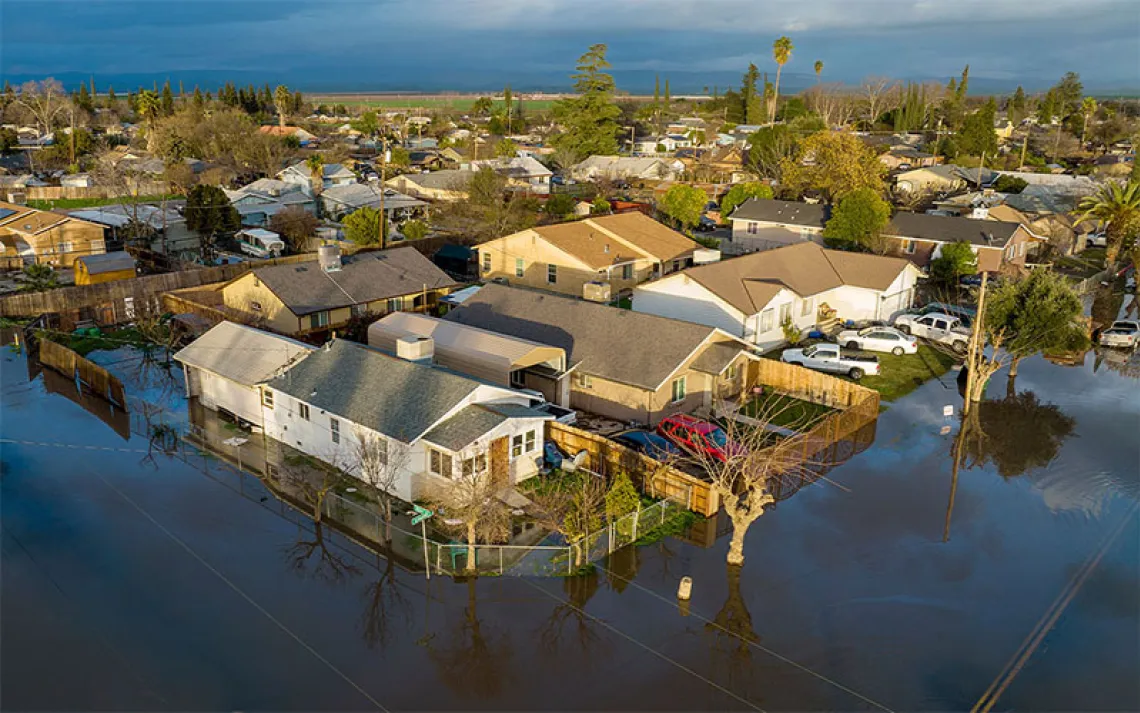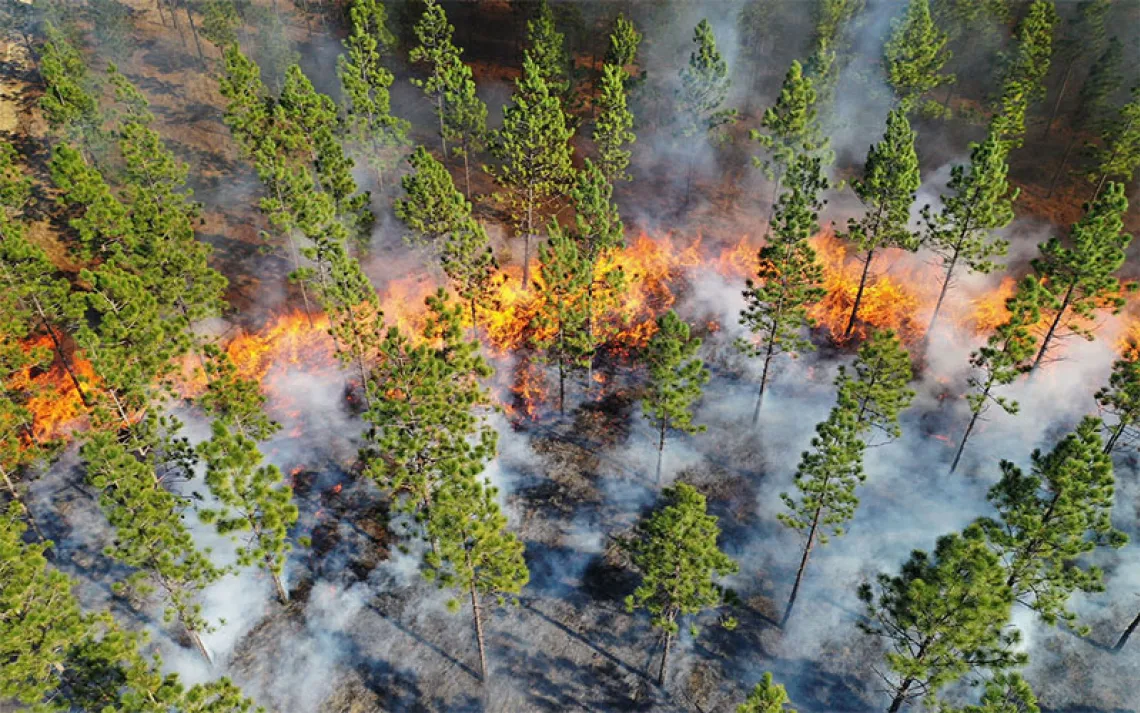Who Gets to Rebuild After a Natural Disaster?
After a town is destroyed, inequities rise to the surface

Illustration by Kumé Pather
My town has been destroyed three times in the past 13 years. After every disaster, the town has had to decide what to rebuild. Those choices have revealed the ugly reality of who we are and what we are willing to save.
The first time was in 2008. Cedar Rapids, Iowa, is a river town, but this was the worst flooding we had ever seen. I hefted sandbags in front of homes and businesses as the slow creep of dark water submerged the streets. I waded thigh-deep through muck and climbed in through the roof of my employer's office to save the art inside. When the waters receded, the mold gave me migraines.
That was a 500-year flood—the kind we would hopefully never see again. But eight years later, before the Army Corps of Engineers had even finished its assessment of the disaster, the town flooded again—a 100-year flood this time. I helped dismantle the local bookstore, carrying boxes of books to the second floor of the building late at night.
Now is the time for environmental journalism.
Sign up for your Sierra magazine subscription.

This time, the city put up flood-control barriers along 16th Avenue. A local dive bar, Tornado's, sat just outside the barriers. It flooded while the businesses on the other side stayed dry.
The bar owners were furious. The city tried to justify the decision. The barriers had to be on 16th Avenue because that street was paved. But 16th Avenue was also the line dividing the west side, where most of the city's low-income housing was, and NewBo, the newly redeveloped east side, which had offices for tech start-ups and new high-rise condos. Tornado's raised money to rebuild by selling T-shirts that read "Tornado's Island: Boat Access Only."
Two years later, the Army Corps of Engineers announced that it would build a floodwall to protect the area that it considered most economically important—the east side. The west side, the corps concluded, was not financially worth protecting.
The city tried to pass a temporary sales tax for another floodwall to protect the west side. A letter to the editor in The Gazette ranted, "If you vote yes on Tuesday, you're taxing yourself for 10 more years to protect a few property owners who chose to stay in the flood zone. . . . Don't ask us other taxpayers to be responsible for your property again." The measure was defeated twice before our local congresswoman helped access federal funds for flood protection for the west side.
In 2020, an inland hurricane called a derecho swept across the Midwest. It ripped the tree in my front yard in half and flung it on top of my home in the time it took to rush my children to the basement.
When the wind died down, I crawled outside, ducking under the branches that blocked my front door, to a city I didn't recognize. A skyline that had once been a gentle wave of green trees was now defined by their broken bodies. Our homes were blown open, the electrical wires hanging limply in the streets like streamers from all the parties we hadn't attended that year.
The worst damage was to the west side, where the buildings were more likely to be poorly constructed. Walls had blown off homes while residents huddled inside. Afterward, people camped on the street. The city took days to set up shelters.
It's been about a year now since the last time we were destroyed. People in town celebrate our resilience. But the next time, and there will be a next time, I wonder what we will pull from the remains, and what we will leave behind.
This article appeared in the Fall quarterly edition with the headline "What We Leave Behind."
 The Magazine of The Sierra Club
The Magazine of The Sierra Club



